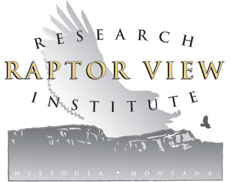Determining Gender in Golden Eagles (ongoing)
Morphological measurements, such as wing-chord, tail length, body weight, etc., have proven to be reliable indicators in determining gender for several raptor species. Typically in raptor species, females are measurably larger than males when we consider simple descriptors like mass and wing-length. This, however, is not always the case with Golden Eagles. By collecting DNA and comparing it to our suite of morphological measurements, we hope to identify the most accurate technique for sexing Golden Eagles in hand.
Wing-loading (Submitted for publication, in review)
Wing loading, the relationship between weight and wing surface area, is a key aerodynamic feature of flight. It is as- sociated with how a particular raptor species hunts and the types of prey it can capture. Lightly wing-loaded raptors, such as Harriers and Kites, exhibit a slow, buoyant flight with a hunting strategy characterized as “searching.” These birds commonly hunt and fly in an energy-efficient manner, not requiring great speed to capture their prey.
Heavily wing-loaded raptors, like the Gyrfalcon and Merlin, are known as “attackers.” These powerful, high-speed fliers employ a direct pursuit style of hunting, often aimed at swift, larger bodied (relative to their size) prey species.
Though a species of tremendous interest, until our study, little was known in terms of where Golden Eagles fit along this spectrum. We determined the wing loading of 33 Golden Eagles and compared individuals by age and gender. Our results indicate wing- loading estimates for adult female Golden Eagles are among the heaviest reported for any raptor, and significantly heavier than other age and gender classes.
Eagle Lead Project (Accepted for publication - Archives of Environmental Contamination and Toxicology)
Lead has long been documented as a serious environmental hazard to eagles and other predatory, opportunistic and scavenging avian species. Due to lead poisoning in Bald Eagles, Golden Eagles and numerous waterfowl spe- cies, the use of lead shot for waterfowl hunting on federal and state lands was banned in 1991. Mounting evidence suggests that the problem persists and the source of the contamination is coming from gut piles left behind by unknowing hunters.
Golden Eagles are opportunistic feeders, known to scavenge and take wounded animals. To date, we have lab analyzed blood from over 250 Golden Eagles and have found that nearly half of our sampled eagles had elevated blood-lead levels. This is a long-term project for which we will continue sampling eagles, while ramping-up our edu- cational outreach. It is our belief, that over time, we will see a decrease in lead levels of our sampled eagles, as people learn more about the health hazards (to humans and wildlife) of using lead based ammunitions for hunting.
Stable Hydrogen Isotope Project (Accepted for publication - Journal of Raptor Research)
Every fall, thousands of northern-latitude raptors migrate through Montana on their annual journey from breeding and natal areas to wintering grounds. We often wonder where regionally these raptors are coming from. Using innovative sampling and laboratory techniques, we can estimate the natal region (not birthplace) of juvenile Golden Eagles. We have found that 66% of our eagles are coming from the Yukon and western Northwest Territories, Canada, to eastern Alaska.
Specifically, we monitor the ratios of an isotope of hydrogen, called deuterium, as the ratio changes con- sistently with latitude. With this technique we only need a thumb-sized feather sample, which then can be analyzed to determine the ratio of deuterium. By sampling only juvenile birds, whose feathers are grown in the nest, we can estimate the individual bird’s natal origin. We completed analyzing the data from 50 fall-migrant, juvenile Golden Eagles and authored a manuscript, which has recently been accepted for publication in the Journal of Rap- tor Research! At the time of this writing, the publication date had not been finalized. We do know how- ever, it will come out during spring or summer of 2015.











